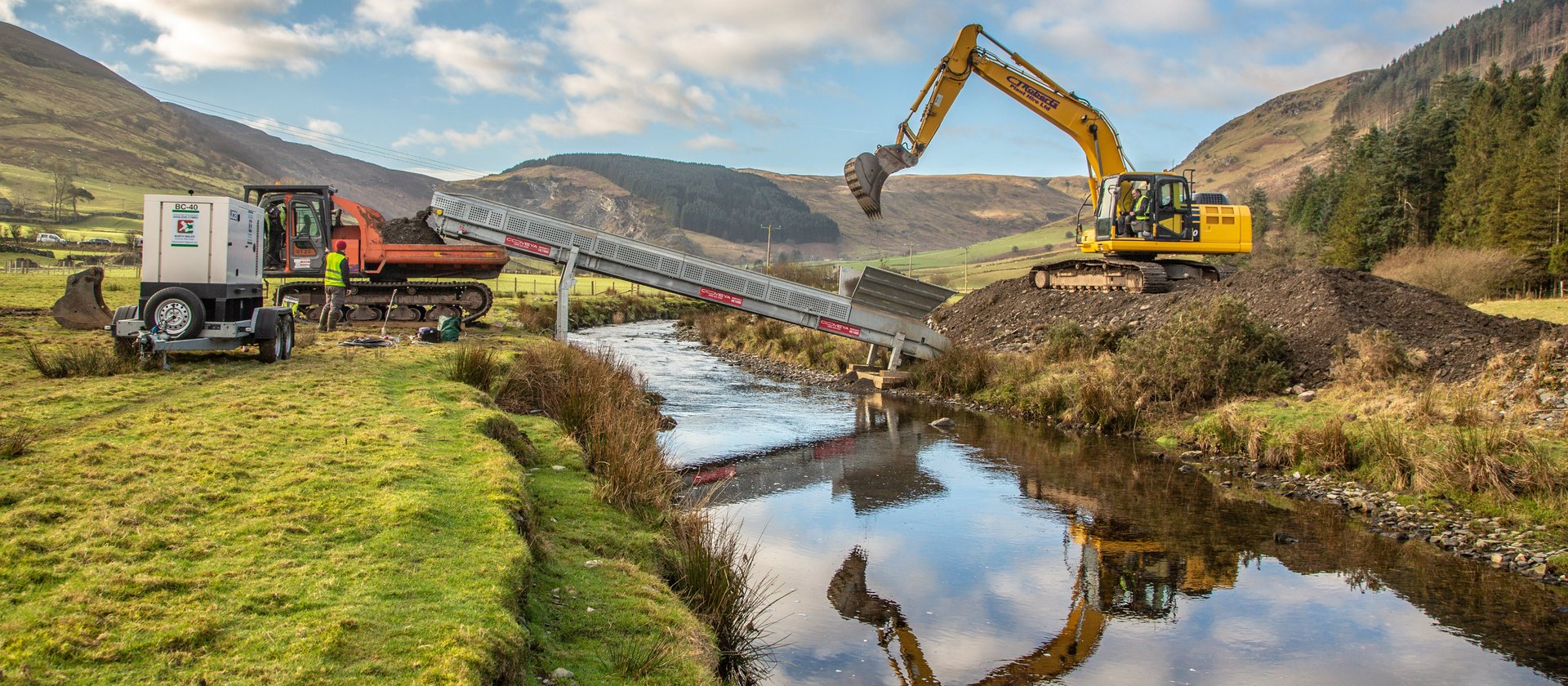Scottish Seagrass Restoration: A Bid For Coastal Nature Recovery

Table of Contents
The Ecological Importance of Scottish Seagrass Meadows
Seagrass meadows are often called the "lungs of the sea," and for good reason. Their importance to the health of Scotland's coastal ecosystems cannot be overstated.
Biodiversity Hotspots
Scottish seagrass meadows are incredibly biodiverse habitats. They act as nurseries and feeding grounds for a vast array of marine life, contributing significantly to Scotland's rich biodiversity.
- Nurseries for commercially important fish: Species like cod, herring, and plaice rely on seagrass for shelter and food during their juvenile stages. Healthy seagrass meadows directly support sustainable fisheries.
- Habitat for invertebrates: Countless invertebrates, from tiny crustaceans to larger crabs and shellfish, call seagrass beds home, forming the base of the food web.
- Refuge for seabirds and mammals: Seabirds forage in seagrass meadows for fish and invertebrates, while marine mammals like seals utilize them for resting and shelter. Specific examples include the common seal (Phoca vitulina) which frequently rests in shallow seagrass beds.
- Supporting Statistics: Studies have shown that a single hectare of seagrass can support over 80,000 fish and countless invertebrates, highlighting the sheer density of life these ecosystems sustain.
Carbon Sequestration and Climate Change Mitigation
Seagrass plays a crucial role in mitigating climate change. Known as "blue carbon," seagrass meadows are exceptionally efficient at absorbing and storing atmospheric carbon dioxide.
- Efficient Carbon Sinks: Seagrass can sequester carbon at a rate up to 35 times faster than terrestrial forests. This makes seagrass restoration a powerful tool in reducing greenhouse gas emissions.
- Scotland's Climate Goals: Restoring seagrass meadows contributes significantly to Scotland's ambitious climate change targets, helping the nation achieve net-zero emissions.
- Quantifiable Impact: Estimates suggest that restored seagrass meadows in Scotland could sequester thousands of tonnes of CO2 annually, significantly contributing to carbon mitigation efforts.
Coastal Protection and Erosion Control
Seagrass meadows provide invaluable protection against coastal erosion. Their dense root systems and rhizomes stabilize sediments and dissipate wave energy.
- Stabilizing Sediments: The roots and rhizomes bind the seabed, preventing erosion and maintaining coastal stability.
- Wave Energy Dissipation: Seagrass beds act as natural buffers, reducing the impact of waves on the shoreline and protecting coastal infrastructure.
- Examples in Scotland: Coastal communities in areas like the Solway Firth and the Moray Firth are already benefiting from the natural coastal protection provided by existing seagrass meadows. Restoration projects aim to expand this protection.
Current Initiatives in Scottish Seagrass Restoration
Significant efforts are underway to restore Scotland's depleted seagrass meadows. These initiatives employ a variety of techniques and foster crucial collaborations.
Restoration Techniques
Several methods are employed for Scottish Seagrass Restoration:
- Seed Collection and Planting: Seagrass seeds are collected and planted in suitable locations, aiming to establish new meadows.
- Transplantation: Existing seagrass patches are carefully transplanted to new areas, accelerating the restoration process.
- Habitat Creation: Creating suitable conditions for seagrass growth, including improving water quality and sediment stability, is crucial for successful restoration.
- Challenges: These techniques face challenges including suitable site selection, ensuring appropriate water quality, and preventing grazing by herbivores. Organizations like Seawilding and the Marine Conservation Society are actively involved in these projects.
Funding and Collaboration
Scottish Seagrass Restoration relies on a diverse range of funding sources and collaborative partnerships.
- Government Grants: Funding from the Scottish Government and other relevant bodies supports research, restoration projects, and monitoring efforts.
- Private Donations: Individual and corporate donations contribute significantly to supporting restoration initiatives.
- EU Funding: European Union funding has historically played a role in supporting marine conservation projects, including seagrass restoration.
- Successful Partnerships: The collaboration between governmental agencies like NatureScot, research institutions, and NGOs like the Seagrass Ecosystem Research Group is crucial for success.
Monitoring and Evaluation
Long-term monitoring is essential to assess the effectiveness of restoration efforts.
- Growth Monitoring: Regular surveys track seagrass growth, density, and distribution.
- Biodiversity Assessment: Monitoring the species richness and abundance within restored meadows helps determine their ecological success.
- Carbon Sequestration Measurement: Techniques are used to quantify carbon sequestration rates in restored seagrass beds.
- Technological Advancements: Remote sensing technologies, such as satellite imagery and underwater drones, are increasingly used for efficient and large-scale monitoring.
Challenges and Future Directions in Scottish Seagrass Restoration
Despite considerable progress, challenges remain for Scottish Seagrass Restoration. Addressing these is critical for long-term success.
Pollution and Water Quality
Poor water quality significantly hinders seagrass growth and survival.
- Agricultural Runoff: Fertilizers and pesticides from agricultural land can cause eutrophication, harming seagrass health.
- Sewage and Industrial Pollutants: Discharge of untreated or inadequately treated sewage and industrial effluents can also have detrimental effects.
- Improved Water Management: Implementing stricter water quality regulations and improving wastewater treatment are crucial for supporting seagrass restoration.
Climate Change Impacts
Climate change poses significant threats to seagrass meadows.
- Rising Sea Temperatures: Increased water temperatures can lead to seagrass bleaching and mortality.
- Ocean Acidification: Increased ocean acidity can impede seagrass growth and reproduction.
- Adaptation Strategies: Developing climate-resilient restoration techniques is critical for ensuring the long-term success of restoration efforts.
Public Awareness and Engagement
Public awareness and community engagement are key to the success of long-term seagrass conservation.
- Raising Awareness: Educational campaigns and outreach programs can raise public awareness about the importance of seagrass ecosystems.
- Citizen Science Initiatives: Involving local communities in monitoring and restoration efforts fosters a sense of ownership and responsibility.
- Promoting Sustainable Coastal Practices: Encouraging sustainable fishing practices and responsible coastal development are vital for protecting seagrass habitats.
Conclusion
Scottish Seagrass Restoration is not merely an environmental project; it's a critical investment in Scotland's future. By restoring these vital ecosystems, we safeguard biodiversity, combat climate change, and protect our coastlines. The initiatives underway demonstrate a commitment to marine conservation, but continued effort, funding, and public engagement are crucial for long-term success. Let's work together to protect and expand Scotland’s vital seagrass meadows and secure a healthy future for our coastal ecosystems. Learn more about how you can support Scottish Seagrass Restoration initiatives today!

Featured Posts
-
 Singapores General Election The Ruling Party Faces Its Biggest Challenge
May 04, 2025
Singapores General Election The Ruling Party Faces Its Biggest Challenge
May 04, 2025 -
 Google Search Ai The Impact Of Opt Out On Data Usage
May 04, 2025
Google Search Ai The Impact Of Opt Out On Data Usage
May 04, 2025 -
 Washington Capitals And Vanda Pharmaceuticals 2025 Playoffs Initiatives Announced
May 04, 2025
Washington Capitals And Vanda Pharmaceuticals 2025 Playoffs Initiatives Announced
May 04, 2025 -
 Ufc 314 Main Event Odds A Deep Dive Into Volkanovski Vs Lopes
May 04, 2025
Ufc 314 Main Event Odds A Deep Dive Into Volkanovski Vs Lopes
May 04, 2025 -
 Will The U S Force Google To Unbundle Its Advertising Business
May 04, 2025
Will The U S Force Google To Unbundle Its Advertising Business
May 04, 2025
